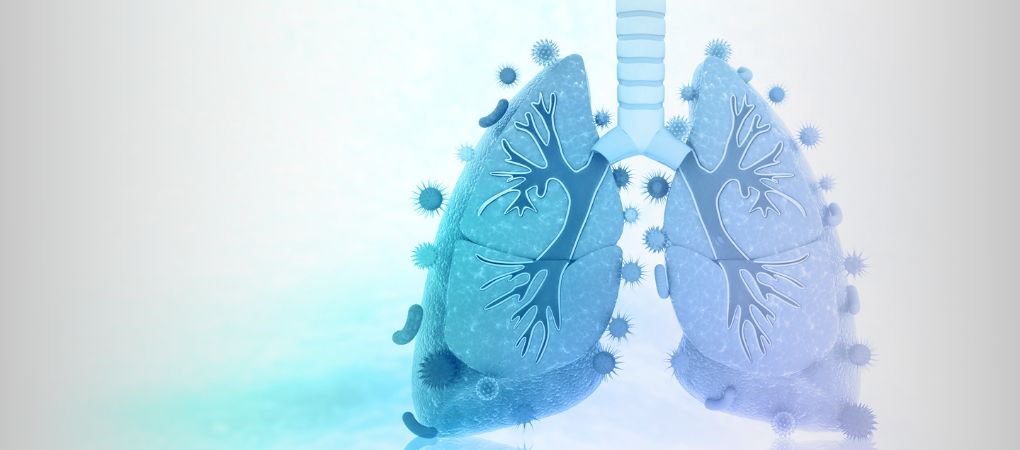Francesca Galiano
|
07/09/2022 - Last update 29/12/2022
Andrea Buscemi, Vincenzo Pennisi, Alessandro Rapisarda, Alfio Pennisi, Marinella Cocco | Year 2019
Efficacy of osteopathic treatment in patients with stable moderate-to-severe chronic obstructive pulmonary disease
Pathology:
Chronic obstructive pulmonary disease
Type of study:
Pilot randomized controlled trial
Date of publication of the study’:
2019/Aug/23

Purpose of the study
- Objective: to evaluate the the efficacy of OMT in people with moderate-to-severe chronic obstructive pulmonary disease with the aim of improving quality of life and cardiorespiratory function
- Measured outcomes:
- Primary: quality of life through COPD Assessment Test (CAT) and respiratory function through 6 minutes walking test (6MWT) and spirometry
- Secondary: adverse effects
Participants
- Number: 32 people (5 female and 27 male, mean age 71 years)
- Criteria of inclusion: clinical diagnosis of moderate-to-severe COPD
- Criteria of exclusion: a history or current diagnosis of asthma or other relevant respiratory or cardiovascular diseases from a clinical point of view
- Groups of study: 2 groups obtained by randomization
- Group 1: standard pharmacologic treatment with the addition of OMT
- 1 person was on oxygen therapy, but he chose to suspend it during the study
- Group 2: standard pharmacologic treatment
- all the participants were smokers or they had been in the past
- Group 1: standard pharmacologic treatment with the addition of OMT
Interventions and evaluations
- Evaluation of quality of life through COPD Assessment Test (CAT) and respiratory function through 6 minutes walking test (6MWT) monitored by using pulse oximetry and spirometry at the beginning of the study, after 4 weeks, after 8 weeks and at a 15-day follow-up
- Evaluation of adverse effects through regular control of the physical and mental health
- 8 weekly sessions of OMT
- OMT: myofascial release techniques directed to maxillary sinus, vertebral-pleural ligaments, phrenic nerves, ribs, pleura, lungs, bronchi, subclavian muscles, and trapezoid and conoid ligaments with the aim to mobilize the thoracic cage and the surrounding tissues
- Standard pharmacological treatment: indacaterol and glycopyrronium
Results
- Primary outcomes: after 4 weeks, the OMT group showed a statistically significant improvement in the CAT questionnaire, while the control group showed no changes. The same result was found in the walking test, where the OMT improved the distance covered and reduced dyspnea.
On the contrary, no changes were detected in the spirometry (forced vital capacity and forced expiratory volume in 1 second) and in the perceived fatigue during the walking test in none of the 2 groups.
After 8 weeks from the start of the study, the OMT group showed a further statistically significant improvement in the CAT, while the distance covered returned to the initial levels (again statistically significantly). The control group did not show any changes.
At the final follow-up, the OMT saw a further improvement of the CAT score. Moreover, the distance covered improved, overtaking the level reached after 4 weeks, the sense of dyspnea and also the sense of fatigue improved. All these results were statistically significant. The control group, on the other hand, did not show any changes.
- Secondary outcomes:no chest pain was relieved after OMT. Although some patients showed an increase in mucus secretion while one of the patients experienced maxillary sinus pain 12 hours after treatment, this pain resolved spontaneously.
- Further analyses: as the study progressed, people in the OMT group were increasingly enthusiastic and motivated to follow the OMT.
Discussion
OMT has been shown to positively affect the health of moderate-to-severe COPD patients, as emerged from the CAT results (which evaluates how much the disease affects a person’s life) and the walking test (which evaluates cardiorespiratory function).
This is a particularly important result because several symptoms of COPD (eg, difficulty sleeping, impaired motor function due to shortness of breath) are definitely disabling. Already after 4 weeks several people resumed taking the stairs or improved resistance to physical exertion. These results favored the establishment of an optimal therapeutic relationship between participants and osteopaths.
Future study will have to evaluate OMT on bigger samples.
The review of Osteopedia
By Marco Chiera
Strengths: accurate description of the osteopathic techniques used (also with the use of images); further study showing the usefulness of OMT for respiratory problems; interesting evaluation (although not systematized) of the mood of the participants as the study progressed
Limits: the limitations of the study are not reported; the general characteristics of the sample are not included, as well as how the participants are distributed amongst the groups.
In the introductory part, it could have been better explained how OMT can improve tissue mobility and promote self-healing; in the e methods part, the measurements made could have been better explained (in particular the CAT questionnaire).

Are you an osteopath?
Register and enjoy the membership benefits. Create your public profile and publish your studies. It's free!
Register now
School or training institution?
Register and enjoy the membership benefits. Create your public profile and publish your studies. It's free!
Register now
Do you want to become an osteopath? Are you a student?
Register and enjoy the membership benefits. Create your public profile and publish your studies. It's free!
Register now







